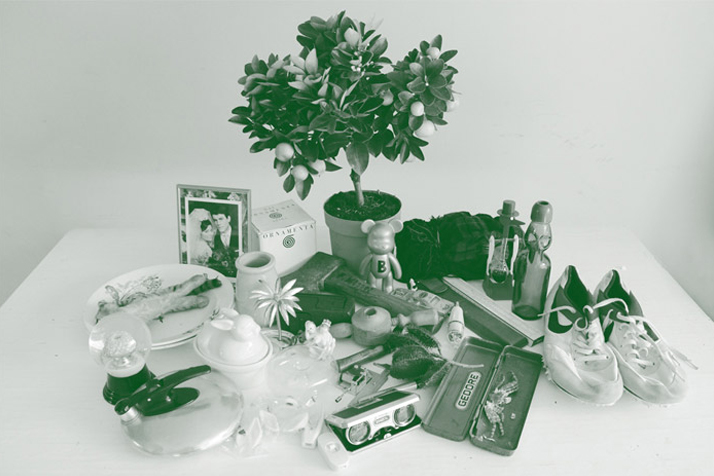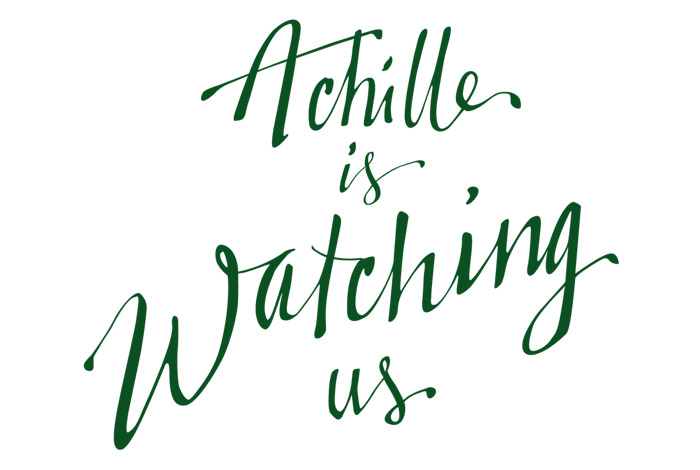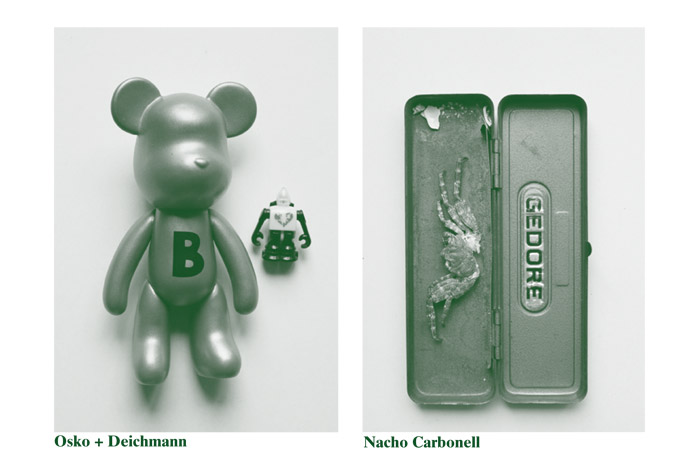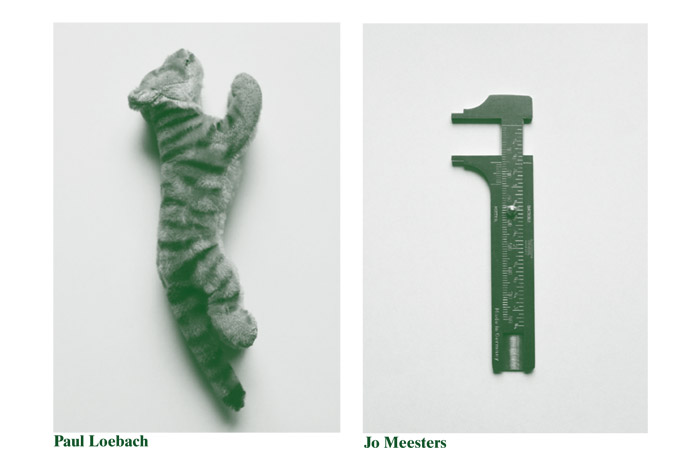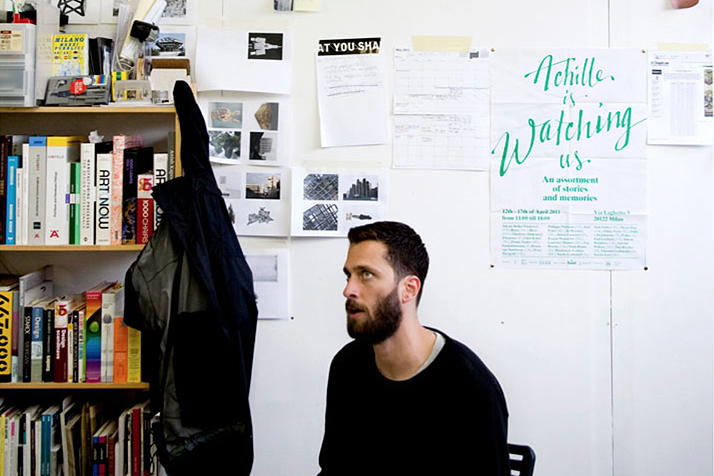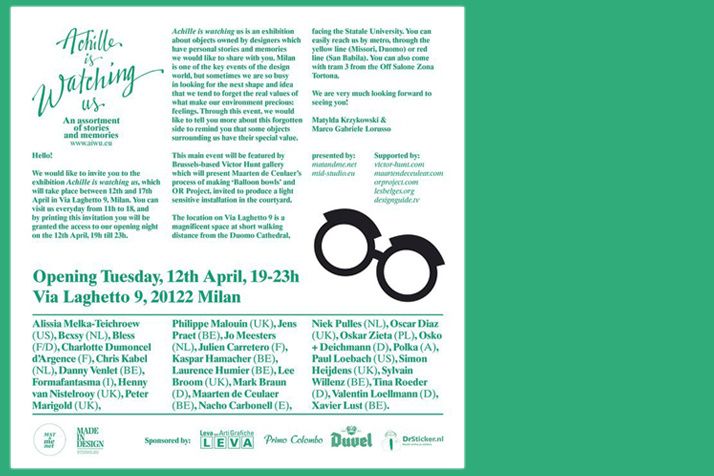Exhibition
April 2011
Salone del Mobile
A self-initiated exhibition, an assortment of stories and memories, by Matylda Krzykowski and Marco Gabriele Lorusso.
Graphic design by Boy Vereecken and Marthe Prins.
‘With Achille is Watching Us, we would like to shift the attention to another side of design that is sometimes forgotten: feelings. Objects have a value if we attach feelings to them; everyone is living in this world of colorful and playful objects, but only a few are able to surpass the limits of time and become memories. In a way, we could say that someone is looking over the shoulders of these ‘blessed’ ones to make sure they become great guardians of our time – people that inspire the minds of the creators and the designers of the precious objects that we introduce into our little world. Someone like Achille Castiglioni, for example.
He is one of the true geniuses of the design world, having designed beautiful artifacts that are still nowadays of a great value. As not so many may know, Castiglioni had a passion for collecting objects, particularly glasses. If you happen to have the opportunity to go and visit his studio, you can still find two big closets full of these ‘memorabilia’, little souvenirs that he collected during his travels and loved to show to friends to make them laugh. Castiglioni was the sort of man who would be sat in a meeting and, all of a sudden, would turn his face around to reveal that he was wearing a pair of springy eyeball glasses, astonishing his clients not only with his capacity for designing great products, but also with his playful nature.
This is the kind of attitude we like, and the kind of attitude we would like to underline: the particular penchant for little objects and the emotions that they can convey’.
Alissia Melka-Teichroew (US); Bcxsy (NL); Bless (FR/DE); Charlotte Dumoncel d’Argence (FR); Chris Kabel (NL); Danny Venlet (BE); Formafantasma (IT); Henny van Nistelrooy (UK); Jens Praet (BE); Jo Meesters (NL); Julien Carretero (FR); Kaspar Hamacher (BE); Laurence Humier (BE); Lee Broom (UK); Maarten de Ceulaer (BE); Mark Braun (DE); Nacho Carbonell (E); Niek Pulles (NL); Oscar Diaz (E); Oskar Zieta (PL); Osko + Deichmann (DE); Paul Loebach (US); Polka (AT); Peter Marigold (UK); Philippe Malouin (UK); Simon Heijdens (UK); Sylvain Willenz (BE); Tina Roeder (DE); Valentin Loellmann (DE); Xavier Lust (BE)
Via Laghetto 9
20122 Milan
Italy
Tina Roeder: “On a stroll through a flea market in Antwerp I came across this old picture frame with an original black-and-white photograph of an anonymous bridal couple. Back home, I overlaid the horizontal photo of this anonymous bridal couple with the slightly smaller, vertical wedding photo of my parents – a couple I’m familiar with. Every time I look at the picture now it makes me smile, since — if you take a closer look at the border — you can still recognize the unknown groom’s hairdo and the bride’s high heels.”
Formafantasma: “These are the two plates we use every day. We like them because they are similar but not equal, the surface is glossy but a bit stained, and the white of the glazing is not too bright. More than designed, they look as shaped by time. We have been using these two beautifully imperfect plates daily for four years during our dinners.”
Simon Heijdens: “This is a fish float which has been lying on my desk for a long time. I found it in a fisherman’s store on an island between Japan and Korea and took it back for my modest collection. I love the fact that with a life destined for dark oceans, meant to be seen by no one but an unfortunate octopus’s final gaze, not a single decision in its conception was made to regard aesthetics — yet it’s the most beautiful object. While it lies on my desk, it tempts me nearly every day to go fishing. Not that I’m a fisherman.”
Philippe Malouin: “The bird was given to me by my partner Alex. I once mentioned that I was obsessed with this object when I was a kid, and I received in on Christmas morning. At 28 years old, I still find the object as fascinating as before. Even though it’s ridiculously kitsch, it’s a pure exercise in balance and science. Its mechanism is deceitfully simple. Just like clockwork, a movement is created by dipping the beak of the bird into a glass of water. Afterwards, the water glass will fuel the bird to balance back and forth until the water runs out. It’s a great, simple, funny, and ugly object.”
Peter Marigold: “Since I was a boy I have always collected things, especially switches and buttons. So when I visited Castiligoni’s studio I was very happy to hear Daniella Gobberti say that one of his favorite objects he designed was a light switch! (Very kindly, she gave me this one.) This is one of my favorite switches in my collection. As well as being beautiful and having a perfect action, I think it reflects the notion that things in Japan are ‘the same but different.’ It’s familiar, but strange. A curiosity.”
Nacho Carbonell: “The crab and box belong together. I found the crab in the sea on top of a rock in Tenerife. It looked so real and full of life, I thought when I approached it, that it could run away. Then I realized it was dead and empty inside. I took it with me and protected this delicate empty shell in the box where I usually have my pens. I kept it safe during my entire journey until I showed it in an exhibition and someone touched it and broke it.”
Bcxsy: “We bought this rabbit butter box at one of our favorite secondhand shops. Being totally white is quite a nice balance to the ‘kitschy’ appearance, so we were happy to have it join our (mostly secondhand) tableware collection. Since it doesn’t have any stamp, we do not know where it comes from. It’s anonymous and imperfect because the rabbit-lid doesn’t really fit on top of the container, which is exactly the reason why we like it. Furthermore, we like the idea of having Q, our pet rabbit, under the table and another rabbit on the table.”Bcxsy: “We bought this rabbit butter box at one of our favorite secondhand shops. Being totally white is quite a nice balance to the ‘kitschy’ appearance, so we were happy to have it join our (mostly secondhand) tableware collection. Since it doesn’t have any stamp, we do not know where it comes from. It’s anonymous and imperfect because the rabbit-lid doesn’t really fit on top of the container, which is exactly the reason why we like it. Furthermore, we like the idea of having Q, our pet rabbit, under the table and another rabbit on the table.”
Sylvain Willenz: “This Japanese soda bottle is part of my small collection of glass objects. While visiting a temple in Japan, I bought a drink at a stall and was amazed by the bottle. Although usually consigned, the stall owner gave it to me. It is surprising because the bottle is sealed by a glass bead, which one manually forces inwards to open it. One should drink holding the bottle with the two dips pointing towards him/her; this will prevent the bead from rolling back and closing it as you drink. The bottle is used again and the bead also seals it over and over.”
Paul Loebach: “Given to me by a very special friend, Hans is a Steiff Tiger made in Germany between 1965-67. I like collecting German objects – I think they remind me that as an American I have no authentic cultural history, which must be very liberating. Another friend once described Hans as ‘in the Tiger Balm pose!’”
